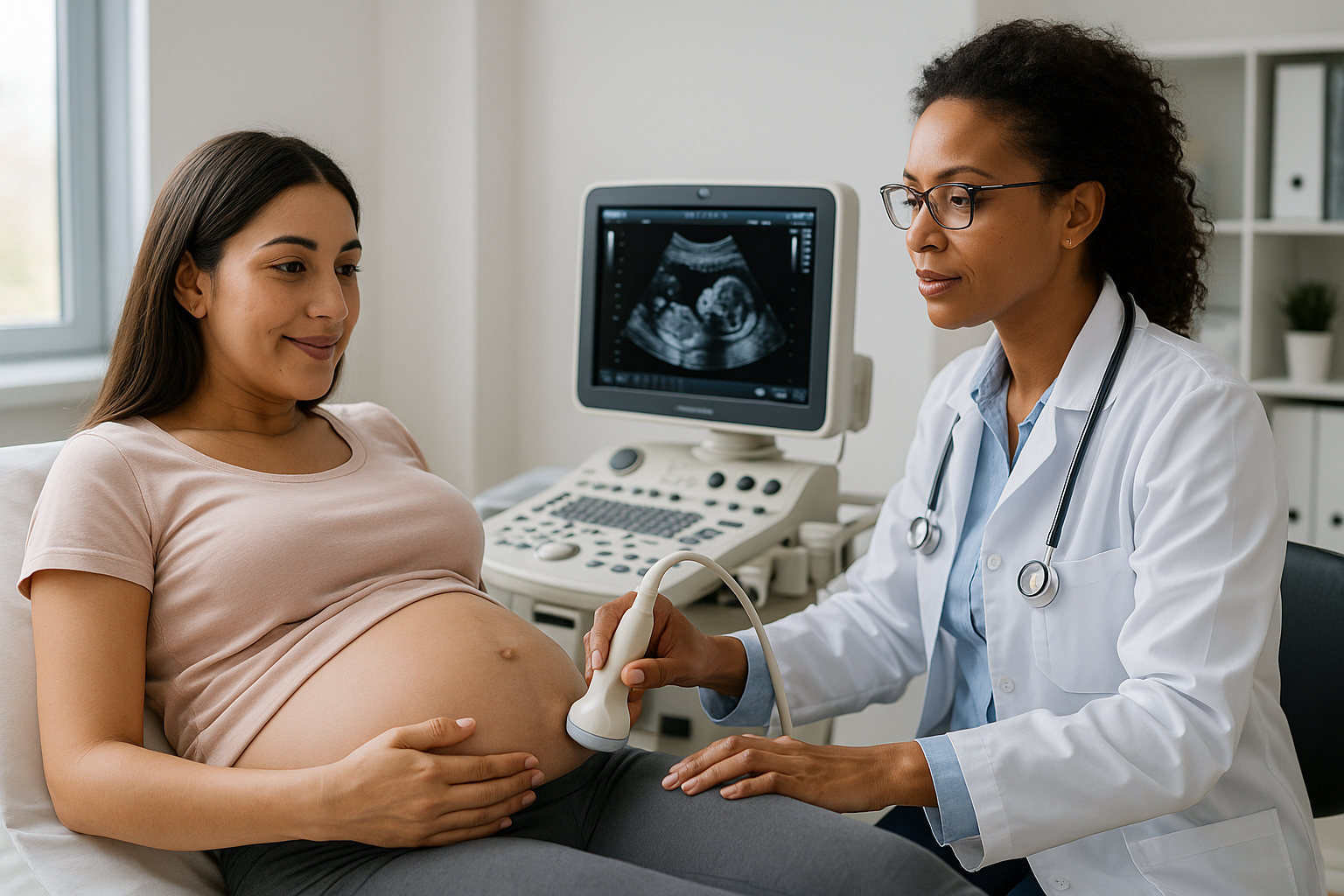AI’s role in early risk detection for safer pregnancies
In the field of medical imaging, particularly obstetric ultrasound, deep learning models have achieved high accuracy in automating measurements of fetal growth parameters and detecting structural anomalies. By reducing reliance on manual interpretation, these models help standardize diagnostic quality across different clinical settings and can support overburdened healthcare systems.

A new review underscores the growing role of artificial intelligence (AI) in revolutionizing maternal and fetal healthcare. The research highlights that while AI-powered tools are transforming screening, diagnosis, and monitoring during pregnancy, significant gaps in data quality, transparency, and clinical integration still prevent these technologies from reaching their full potential.
The study, published in Journal of Clinical Medicine and titled “Smart Pregnancy: AI-Driven Approaches to Personalised Maternal and Foetal Health—A Scoping Review”, provides the most comprehensive mapping to date of AI applications in pregnancy care. It examines evidence from 128 studies to show how AI has been deployed in obstetrics for early risk prediction, medical imaging, continuous monitoring, and decision support, as well as the regulatory and ethical barriers that must be addressed to translate research into real-world improvements.
Advancing pregnancy care through AI
The review details how AI is already reshaping maternal and fetal health services. Machine learning models trained on electronic health records (EHRs), demographic data, and clinical histories have demonstrated strong potential in early screening and risk prediction for conditions such as gestational diabetes, hypertensive disorders, preterm birth, and congenital anomalies. These predictive tools offer clinicians more timely warnings, which could enable earlier interventions and better outcomes for both mother and child.
In the field of medical imaging, particularly obstetric ultrasound, deep learning models have achieved high accuracy in automating measurements of fetal growth parameters and detecting structural anomalies. By reducing reliance on manual interpretation, these models help standardize diagnostic quality across different clinical settings and can support overburdened healthcare systems.
The study also highlights the role of AI-enabled wearables and remote monitoring devices, which can track maternal vital signs, such as blood pressure, heart rate, and glucose levels, as well as fetal movement and heart rate in real time. These tools enhance continuous monitoring between clinic visits, potentially flagging early signs of complications and allowing healthcare providers to intervene sooner.
Crucially, the review notes that AI-driven clinical decision support systems have the potential to integrate data from diverse sources—imaging, laboratory tests, patient-reported outcomes, and wearable devices—to assist obstetricians in making timely, evidence-based decisions during prenatal care. The authors describe this as a step toward more personalized pregnancy care, where interventions can be tailored to each patient’s unique health profile.
Barriers to clinical integration and trust
Despite these promising developments, the research identifies several barriers that continue to hinder widespread adoption of AI in pregnancy care.
A major concern is data quality and diversity. Many existing models have been developed using relatively small and demographically narrow datasets, which can compromise performance across broader populations and risk perpetuating health disparities. Building large, representative datasets is critical to ensure that AI tools are fair and reliable.
The authors also highlight the challenge of clinical integration. Many AI solutions remain siloed from routine workflows and lack seamless interoperability with electronic health record systems, reducing their usefulness in busy clinical environments.
Another key issue is the lack of transparency in AI models. Many high-performing algorithms function as “black boxes,” offering little insight into how predictions are made. This limits trust among clinicians and can slow adoption, especially in sensitive areas like obstetrics. The review calls for the broader use of explainable AI (XAI) techniques, such as SHAP and LIME, to provide clearer reasoning behind model predictions.
Finally, the study stresses that ethical and regulatory concerns must be addressed. Ensuring patient privacy, safeguarding sensitive maternal and fetal health data, and adhering to regulations such as the EU AI Act and U.S. FDA guidelines are critical for ensuring safety and public confidence. The authors note that future clinical trials should adopt emerging reporting frameworks such as SPIRIT-AI and CONSORT-AI to improve transparency and accountability.
Building the future of smart pregnancy care
The review offers a roadmap for bridging the gap between AI research and real-world clinical impact in obstetrics.
First, it recommends expanding multimodal and longitudinal datasets that combine clinical, imaging, behavioral, and environmental data to improve the accuracy and generalizability of predictive models. Collaborative data sharing across institutions and countries will be essential to create tools that can benefit diverse patient populations.
Second, the authors advocate for stronger collaboration between clinicians and AI developers to ensure that new tools address genuine clinical needs and fit into existing care pathways. Training programs to build AI literacy among healthcare providers will also help increase confidence and appropriate use.
Third, the review underscores the importance of regulatory clarity and governance frameworks that balance innovation with patient protection. Consistent standards for validation, consent, privacy, and post-market monitoring will be necessary to ensure that AI-based tools are both safe and effective when deployed in live healthcare settings.
Lastly, the authors highlight that future research should focus on real-world clinical validation studies to confirm that AI solutions improve maternal and fetal outcomes in routine practice. This evidence base will be critical for convincing healthcare systems and policymakers to integrate AI into standard prenatal care.
- FIRST PUBLISHED IN:
- Devdiscourse










